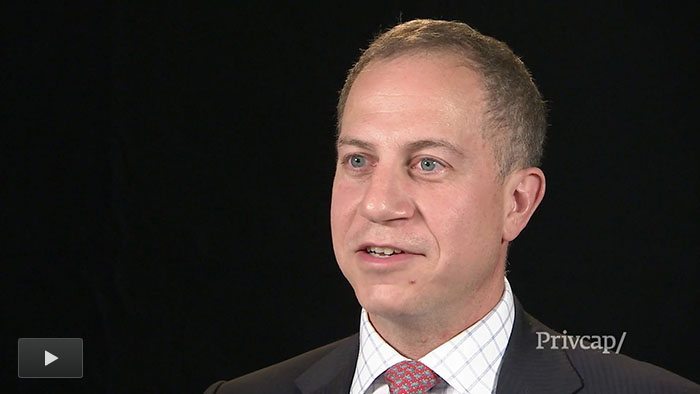What the World’s Largest LP Wants in a GP
The Canada Pension Plan Investment Board (CPPIB)—the largest and most active PE investor the world—is growing so rapidly that maintaining allocation in the asset class will require creativity.
In an exclusive interview with Privcap, the head of fund investing at CPPIB reveals the types of GPs the $185-billion fund wants to back.
Many giant pensions to the North are deemphasizing fund investing and migrating toward direct investing. One would expect the CPPIB, the largest LP in the world, to lead the flock. However, its massive size and rapid growth rate prevents it from going fully direct.
“With our scale, it’s hard to have a large enough direct program to be meaningful to a $185-billion and quickly growing fund,” says Jim Fasano, VP of funds, secondaries and co-investments at CPPIB.
CPPIB can’t partake in a steady flow of direct opportunities, simply because many of these deals can’t meet the behemoth fund’s minimum check size. So the pension investment manager sought innovative strategies for deploying capital via passive investing.
“We are rolling out an emerging manager program focusing on those managers who—while not significant in scale today—have all the attributes to grow over time and can scale with us down the road,” says Fasano.
Fasano seeks smaller fund managers with the potential to absorb future capital from CPPIB. “Even if it’s an emerging manager where they haven’t been together as a group, we’ll review the collective track record,” Fasano adds. “We’ll then make sure that the individuals have track records that we would back.” CPPIB also reviews the structure of the organization to confirm strategy and alignment.
“The main thing for us is both the historical performance of the GP and what we believe to be the expected performance going forward,” he said. “Returns are the main driver.”
The pension plans to invest a defined portion in an early fund but keep a larger amount of capital with a more established firm. The overall objective is to grow the dollar amount as the smaller GP raises more third party capital—or shrink it on a relative basis.
CPPIB has partnered with emerging managers in China who have launched spinoffs after a long stretch at an established firm. Sifting through the wreckage of the financial crisis is another strategy for seeking emerging managers; his team looks within GPs to identify sub-teams with long-term potential.
Fasano adds, “We try and see which of these managers we think, while being relatively new today, will be very successful and thus grow significantly over the coming years.”
Roadblocks To Going Direct
The gigantic pension recently closed one of the biggest buyouts of 2013. Last month, CPPIB teamed up with L.A.-based fund manager Ares Management to buy the U.S. department store Neiman Marcus for $6 billion. The company’s sellers, TPG Capital and Warburg Pincus, paid $5.1 billion for the luxury retailer in 2005.
The deal illustrates how some of the largest Canadian LPs are focusing on direct investment deals. For instance, in recent years, the $61-billion Ontario Municipal Employees Retirement System ditched passive investing and co-investing altogether, and then launched a venture capital arm in 2011.
But for CPPIB, focusing on venture capital, particularly beyond Canadian borders, is oftentimes out of the question. “Venture capital is just something where we’re never really going to be able to get the scale that we require,” Fasano says. “Scalability of our business has long been a challenge for us,” Fasano says. “So we look to a number of ways in which we can increase our private equity business. One way is to add new activities, new products. Our secondaries business is a good example of that.”
Peripheral Opportunities: Co-Investments & Secondaries
CPPIB’s direct business typically follows what Fasano calls a co-sponsorship model. It enters deals early and takes deeply involved roles with GPs. This stretched the investment team thin.
“They have been focused on larger and larger equity checks,” says Fasano. “So we have lost an ability to invest along some of the mid-market managers, who even in the largest of co-sponsorships, couldn’t hit CPPIB’s minimum equity check size.”
Fasano says the new program will be more passive. “We will be less active. We won’t get involved as early. It’ll be more towards a classical syndicated co-investment program,” he says.
While the direct group focuses on deals priced at $300 million and above, the co-investment program focuses on minority investments between $50 and $125 million, with a minimum investment of $25 million.
“What we do on the large direct side and what we hope to do with our new co-investment program, without broadening the depth to which we go into the GP world, is essentially get more scale per manager.”
Meanwhile, the secondaries program targets investments of $100 to $500 million, with a minimum investment of $25 million. Fasano says the $5 billion secondaries portfolio is growing steadily due to a very active pipeline of deals from GPs.
“Given our size and growth, being able to deploy capital and scale is a significant element,” says
Fasano. “But at the end of the day, it really is all driven by returns investors expect them to be for the risk they’re taking on, so we’ll likely see figures in the mid-to-high teens to the low twenties. Multiples are going to lag but IRRs are going to improve.” ■
The head of funds for CPP Investment Board is seeking GPs who can scale with the rapidly growing $185 billion system.
